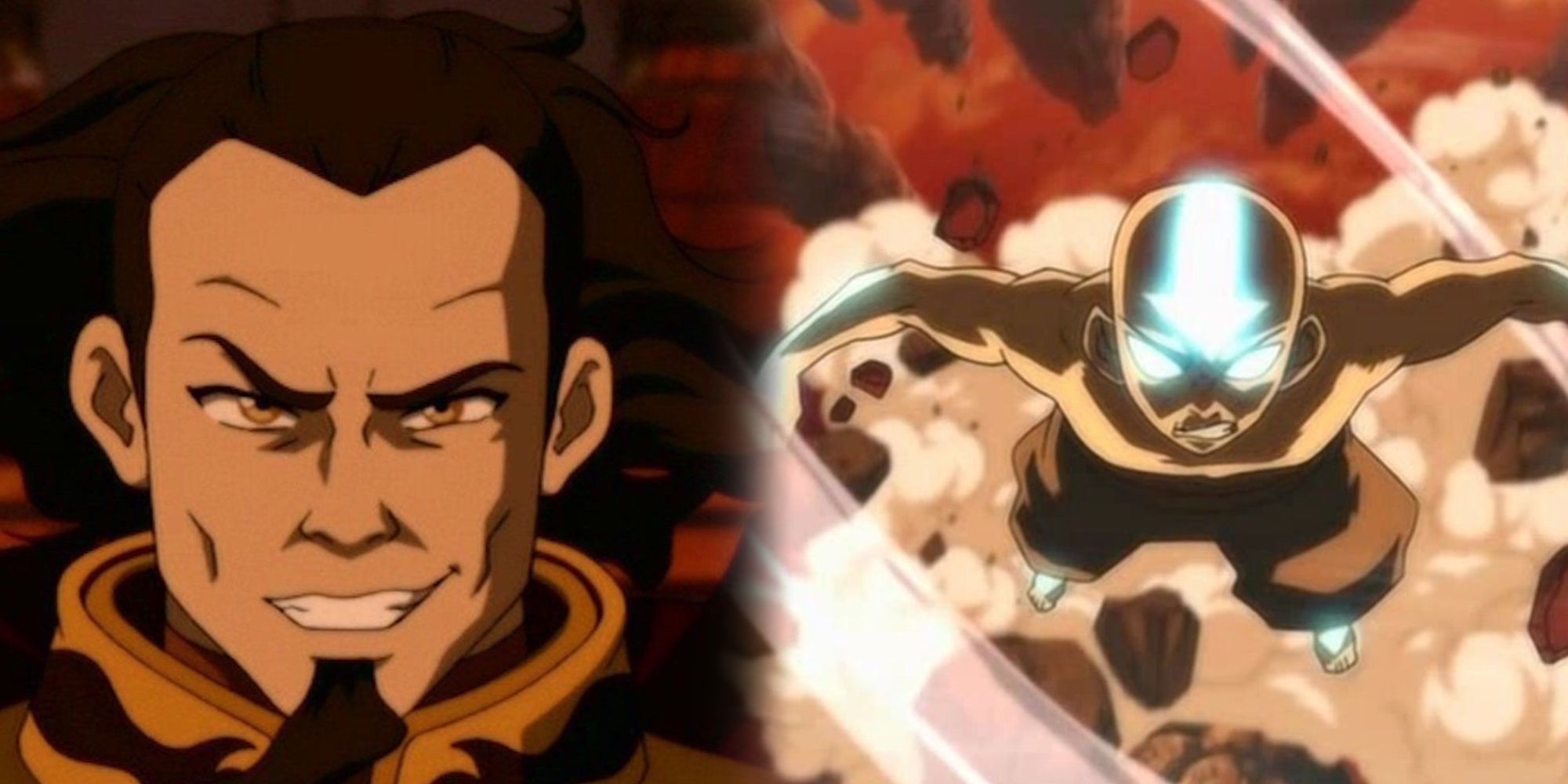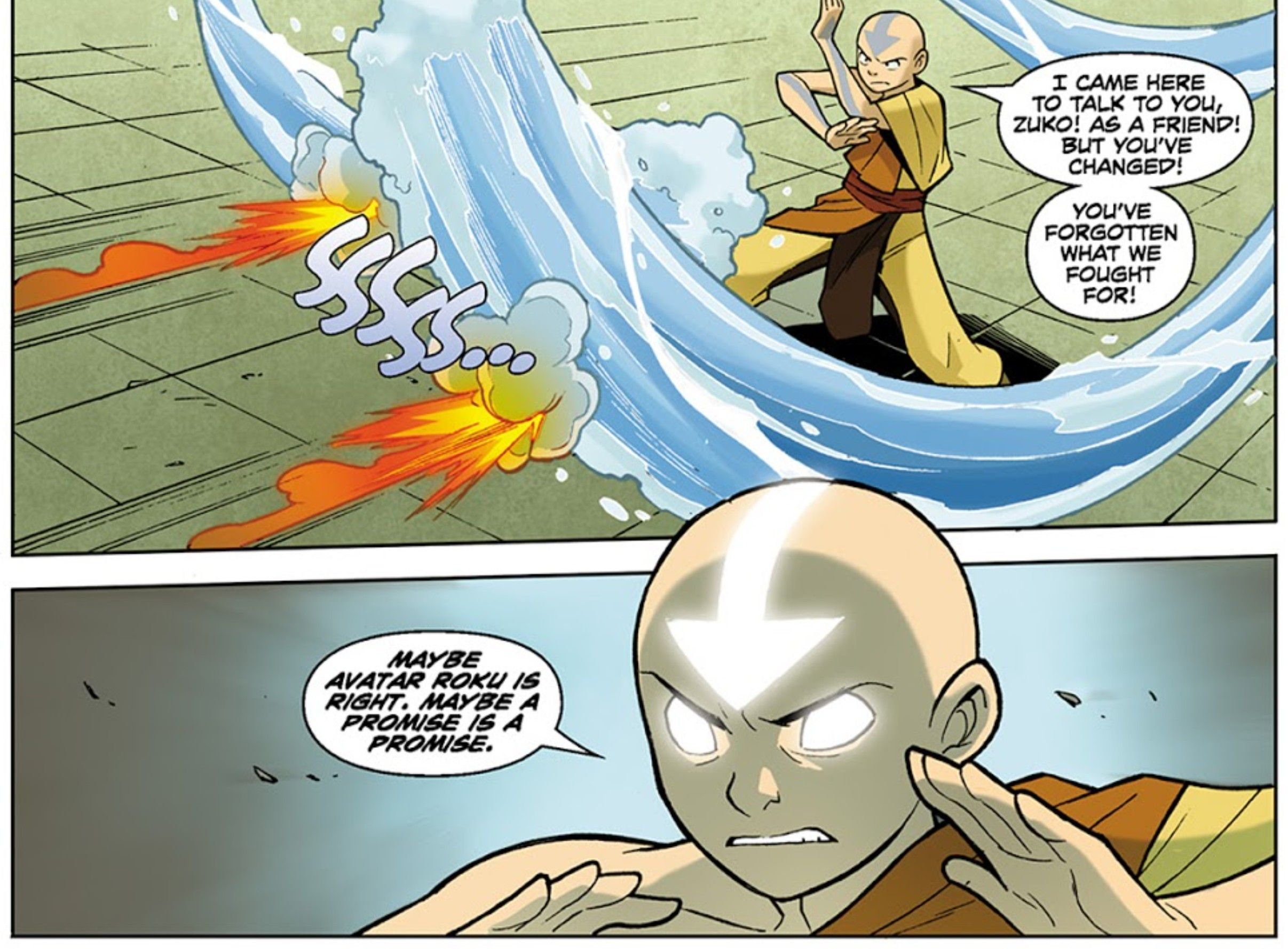In the series finale of Avatar: The Last Airbender, Aang didn’t kill Fire Lord Ozai even though he had the chance. Fire Lord Ozai, the primary villain of Avatar, inherited his title and position as ruler of the Fire Nation from his father Azulon, who inherited it from his father, Sozin. It was Sozin who began the Hundred Year War, wiped out the Air Nomads, and plunged the world of Avatar into violence and chaos. But when Aang was faced with the opportunity to exact vengeance for the wrongdoings of Ozai and his ancestors, Aang chose not to kill Ozai.
The climactic battle between Ozai and Aang in Avatar season 3, episode 21, "Sozin's Comet, Part 4: Avatar Aang," culminates with Aang trapping Ozai by using earthbending and then forming a giant spear comprised of all the elements. Aang plunges the spear toward Ozai, but at the last second, Aang stops and comes out of the Avatar State. Aang says, “No, I’m not going to end it like this." Before Ozai can attack Aang again, Aang traps him once again using earthbending and then uses energybending — taught to him by a lion turtle, the originators of all bending — to take away Ozai’s firebending.
The reason Aang chose to take away Ozai’s bending rather than kill him has to do with Aang’s beliefs as well as his personality. Aang has a strong moral compass that points toward nonviolence and diplomacy, when possible. Generally, Air Nomads are peaceful people who believe in the sanctity of all life (as such, they are also vegetarians) and they do not believe that any good comes from revenge. Aang explains this to Katara just two episodes before the series finale. In season 3, episode 16, “The Southern Raiders,” Katara is desperate to find and kill the man who killed her mother, but Aang urges her to reconsider and warns her with a saying that he learned from the monks who raised him at the Southern Air Temple: “Revenge is like a two-headed rat viper. While you watch your enemy go down, you're being poisoned yourself.”
Aang, however, did not always practice as he preached, making the point a little less effective. In season 2, episode 11, “The Desert,” a buzzard wasp takes Aang's flying lemur, Momo. Even after rescuing Momo, Aang kills the buzzard wasp when he didn’t need to – it was clearly an act of revenge. Between sinking ships in the ocean and knocking airships out of the sky, Aang likely killed several people over the course of the series. While no one is shown to have died as a direct result of their actions – and it is, after all, a kid’s show – it’s worth noting that Aang didn’t seem to have as strict of a “no-kill” rule as the series finale would have us believe.
In the graphic novel, Avatar: The Last Airbender - The Promise Part 1, this becomes even clearer. Zuko makes Aang promise to kill him if he becomes like his father and Aang reluctantly agrees. But shortly thereafter, Aang meditates with Avatar Roku, who tells Aang that he wishes he had killed Sozin when he saw what Sozin was becoming. Aang is horrified by the prospect of killing his new friend, yet similarly begins to fear what Zuko might become. Wondering if Roku could have been right, Aang nearly does kill Zuko. Luckily, Katara is able to calm him out of the Avatar State and Aang apologizes to Zuko.
While Aang was the Avatar, he was also human. He had weaknesses and sometimes became volatile, but it reveals something of Aang’s character that he only became angry when someone innocent was harmed or threatened, particularly those he loved, like his flying bison, Appa, and love interest, Katara. Even then, he often chose mercy and peace over his impulses, which is why he chose to spare Fire Lord Ozai’s life. Avatar: The Last Airbender ends with Ozai in prison, while his son, Zuko, ascends the throne. Zuko and Aang work together to bring balance to the nations without the need for killing anyone.


